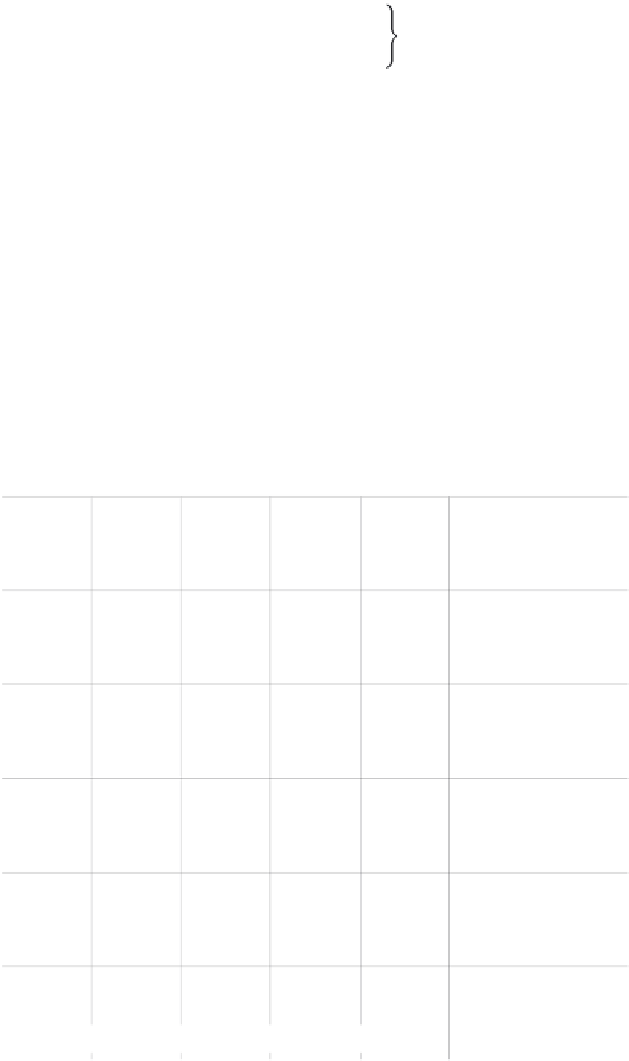Environmental Engineering Reference
In-Depth Information
illustrated in Figure 12-8. In this case, a
log-normal distribution
is the best it to the design
data, which indicates that there is a random distribution of the
logarithm
of the load param-
eter. The governing equations are as follows:
2
m
ln(
L
F
) -
(12-2a)
n
= 490exp -0.5
s
(12-2b)
PDF
=
n
/50
where
n
= bin cycle count (cycles/hr/bin)
ln( ) = natural logarithm of ( )
L
F
= flatwise cyclic bending moment load (kN-m)
m =
5.705, natural logarithm of median flatwise blade cyclic load
L
F
s = 0.35, natural logarithm of standard deviation of
L
F
PDF
= probability density function (cycles/hr/kN-m)
Using these log-normal curve-fit parameters, the median size of the flatwise cyclic load is
exp (m) = 300 kN-m, and the 98
th
percentile cyclic load is exp (m + 2s) = 605 kN-m.
1,000.000
Log-Normal Curve-Fit:
n'
cycles/hr/bin
100.000
10.000
1.000
0.100
PDF
cycles/hr/kN-m
0.010
Design Spectrum: 9.0 h; 19,107 Cycles
0.001
0
200
400
600
800
1,000
1,200 ,400
Blade Flatwise Cyclic Load,
L
F
(kN-m)
Figure 12-8. Curve-fitting of a Mod-2 blade flatwise cyclic load spectrum with a log-
normal distribution, and calculation of the related probability density function.


















































Search WWH ::

Custom Search